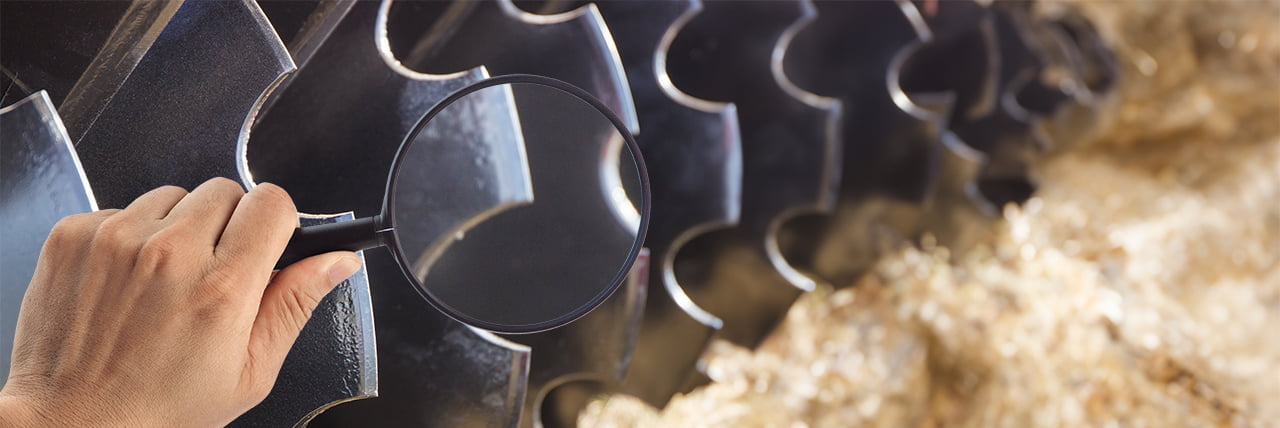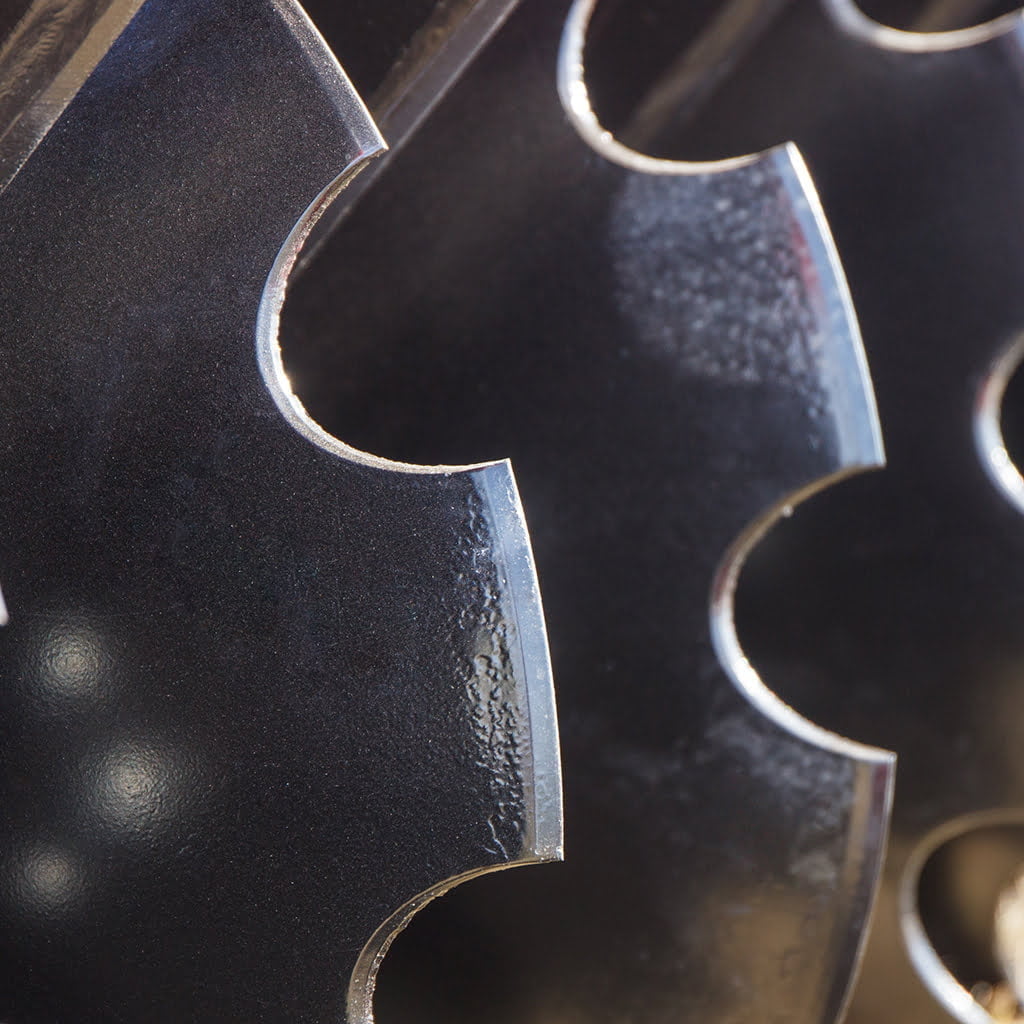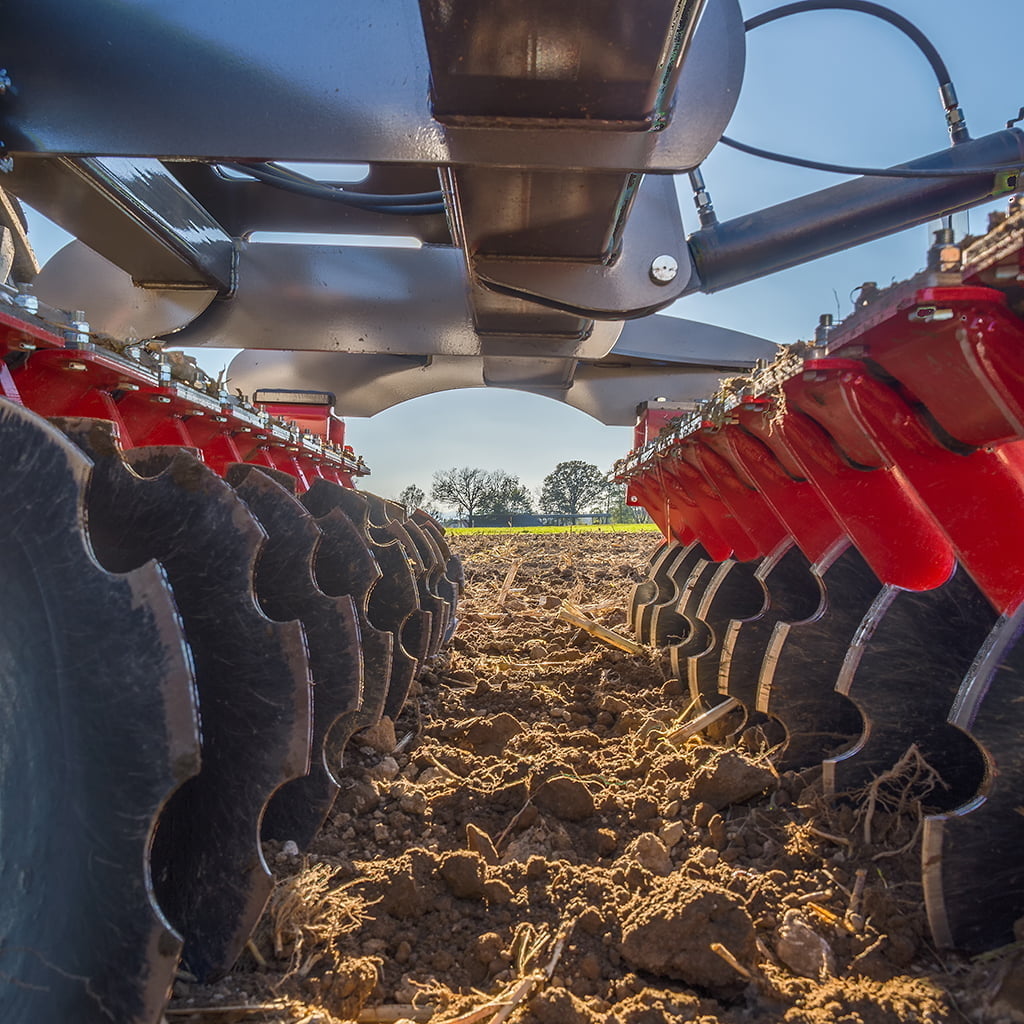
Discs for a disc harrow - how to choose properly?
Tillage discs are an integral part of harrows and aggregates. They can better prepare the soil for post-harvest cultivation and increase the efficiency of the work. We should add that they differ in construction and the material they are made of. What is worth knowing about this topic? Check it out!
Key features of cultivation discs
Three basic types of plates can be distinguished.
Smooth plates
Such plates have smooth edges, devoid of serrations. They are great at loosening the soil at a shallow depth. They also perform well on sandy and dry soil. Such discs can also be used to prepare the ground for sowing after plowing or the desire to level it after the harvest is complete. They also do not need to be replaced as often as with toothed plates.
However, smooth plates also have their disadvantages. If you try to cut through dense crops with a smooth blade, they will push forward rather than smash them. If you use them on soil that is hard or in which there are, for example, branches, boughs or thick harvest residues, there is a possibility of the machine hanging up or damaging the blade.
Toothed discs
Toothed plates have serrated edges that are stronger than those of smooth plates. They easily cut through hard, compacted soil (even stony soil), vegetation, weeds, roots, heavy clods, and other crop residues (such as after corn). This promotes good loosening of the soil and increasing its permeability, making it more suitable for planting. On the other hand, toothed discs have a shorter lifespan than smooth discs. They also disturb the soil structure to a greater extent.
What’s more, skillful cutting of crop residues prevents the emergence of corn borer larvae. Worn plates do a very poor job of doing this (the more worn plates, the leftovers are cut into larger pieces), with the result that parasites have room to thrive. This, in turn, makes it necessary to use a lot more chemicals to fight weeds and parasites.
Corrugated plates
Wavy plates have a distinctive wavy surface. They allow to cultivate stubble in a superficial way, and can be successfully used for shallow and ultra shallow work. They are easily applied to fertile and typical, wet and heavy soils, as well as those with a lot of mulch. Using such discs, a narrow strip is prepared for sowing, making it possible to sow seeds accurately. They can even be used on untouched stubble without problems. They skillfully mix the soil with plant debris.
What the cultivation discs are made of
Usually the plates are made of spring steel or stronger boron steel. However, you can also find such products on the market made of weaker carbon steel.
Spring steel discs
They are used in harrows and aggregates less than 3 m wide. In addition, they exhibit properties similar to boron steel plates.

Boron steel discs
Boron steel discs are designed for aggregates and harrows over 3 m wide. They have in unique blades (in terms of length and angle) that longitudinally cut through the oat stalks. If we’re talking about notches, they are ideal for heavier soils, such as for levelling tramlines, covering manure, or after cultivating rapeseed and corn. The diameter of such plates is usually kept at 620 mm. They are used to work at a speed of 8-20km/h, at a depth of 10 to 15cm.
Carbon steel plates
Carbon steel discs, the least durable, are used in disc plows, and they excel at mixing crop residues. They easily cut into the soil, which contributes to the rapid growth of intercrops – this allows the rapid formation of humus. The diameter of such discs is usually 510 mm. They are designed to work at a speed of 10-15km/h (with a recommended speed of 12 km/h for plowing) at a depth of 3 to 10 cm.
Padded plates
The surfaced plates are also worth noting. These are plates made of boron steel, but there are special napins on them, made by surfacing technique. They allow a significant increase in performance and abrasion resistance.
Which plates are the most versatile?
Discs with a diameter of about 600 mm, distinguished by their heavily serrated edges, are the most versatile. They are ideal for both shallow post-harvest tillage and more intensive soil work. Discs, on the other hand, which have less serrated edges and a diameter of about 500 mm, do an excellent job of shallow stubble breaking. However, they do not pass the test in more difficult soil conditions. We should add that most often you can find discs with a diameter of 460-520 mm, which are used for maximum cultivation at 12-15 cm depth, and most often 5-10 cm.
How are tillage discs attached to harrows?
The discs are used in both traditional and compact disc harrows. However, they are fixed in a different way. As for the compact disc harrow, the discs are attached to two arms arranged parallel to each other. What’s more, they are angled relative to the direction of travel – each disc is attached separately, at the same angle as the others. This method of attachment comes with certain benefits. For example, if an obstacle is encountered, only one of them will change its alignment, while other plates will not. They continue to perform their task at that time. The situation is different for traditional harrows, which are attached to a single axis. What’s more, the plate on compact harrows is simply easier to replace.

How are the plates secured?
Wanting to protect plates from damage caused by stones, manufacturers opt for various protections. Among the most popular ones are rubber fuses – the discs are attached to the harrow on them. It is good to pay attention to the diameter of these elements. The greater the thickness of these fuses, the safer for the plate.
Sometimes spring protection is also used, which can be divided into two types: spring and spring-loaded. Their price is higher than that of rubber fuses, but they pass the test better on stony soils.
Discover the full range of Exparto and choose the perfect plate models for you!
